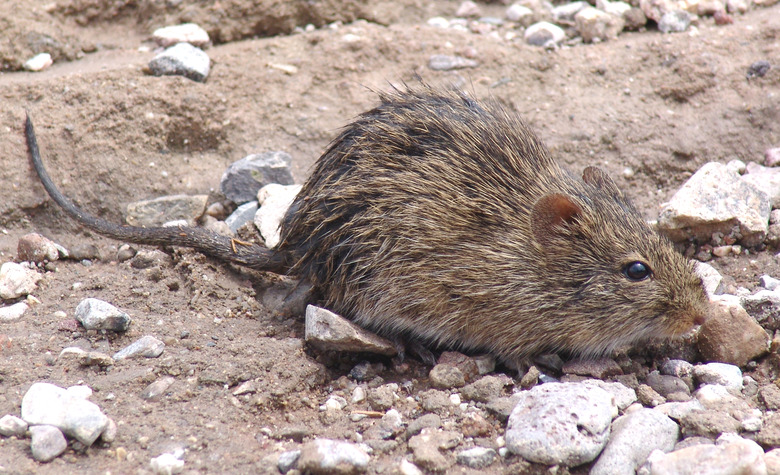What Eats Plants In The Desert?
Vegetation in the desert is scarce yet manages to support a vibrant ecosystem. The carnivores of the desert—from the coyote to the various meat-eating lizards—are well known, but what eats plants in the desert? As it turns out, quite a bit. Read on to find out what eats the desert's scarce vegetation and in turn feeds the desert's carnivores.
Herbivores
Herbivores
A creature that only eats plants is called a herbivore, as opposed to as carnivore (which only eats meat) or an omnivore (which eats both.) These sorts of animals make up the second tier of the food chain. They are above the plants, which are considered the producers of the food chain because of the way they convert the sun's energy to living matter. Herbivores are below carnivores on the food chain. Because of dry conditions in the desert, most herbivores living there get the majority of their water from the plants they eat rather than drinking directly from water sources.
Insects
Insects
While plenty of desert insects are carnivores—including spiders and scorpions—there's a plethora of plant-eating insects as well. This includes a variety of ants and related insects such as aphids. These tiny creatures are found in deserts throughout the world, including the American Southwest. Aphids fly from plant to plant and slowly eat them before moving on to the next; typically aphids have a favorite plant they eat consistently. Also common in the American Southwest as well as Mexico is the cochineal, frequently used for dyes for clothing and cosmetics. These creatures typically live on and feed on certain species of the prickly pear cacti. Various species of moths and butterflies also abound in the desert, as do some herbivore ants and beetles.
Mammals
Mammals
There's a variety of small mammals in the desert that eat exclusively desert plants. This largely includes smaller mammals like rodents, including the various species of rats and mice that forage in deserts around the world. There are also rabbits, such as the American jackrabbits. Exceptions to the small-mammal rule exist, however; perhaps the most famous is the kangaroo, which lives in the deserts of the Australian outback. America's deserts, particularly near mountains, host a variety of species of plant-eating deer. And let's not forget cows and sheep, two creatures originally domesticated by desert dwellers in the Middle East. Originally tamed by desert dwellers because of their ability to efficiently turn water and grass into high-protein meat, these desert-native herbivores are today found on farms all over the world.
Birds
Birds
Birds are good at finding seeds, which in turn makes them good at spreading seeds. The varieties of quail found in America's deserts are particularly good at this, foraging for seeds where they can as well as the occasional blossom or fruit. These quail also eat insects from time to time but rarely leave the cover of a bush or tree to do so. Mourning doves also feed on a variety of seeds and grains found here and there in the desert and on various grasses.
Reptiles
Reptiles
Most of the reptiles in the desert are carnivores, feasting on insects, small mammals or even other reptiles. The tortoise, however, is a herbivore that adapts to the hot desert days by burying itself in the sand. At night these creatures come out and eat what plants they can find, secure from predators because of their large shell. Iguanas are also herbivores. These animals, a somewhat common household pet, eat flowers, fruit and a lot of leaves found in the desert.
Cite This Article
MLA
Pot, Justin H.. "What Eats Plants In The Desert?" sciencing.com, https://www.sciencing.com/eats-plants-desert-5326406/. 22 November 2019.
APA
Pot, Justin H.. (2019, November 22). What Eats Plants In The Desert?. sciencing.com. Retrieved from https://www.sciencing.com/eats-plants-desert-5326406/
Chicago
Pot, Justin H.. What Eats Plants In The Desert? last modified March 24, 2022. https://www.sciencing.com/eats-plants-desert-5326406/
